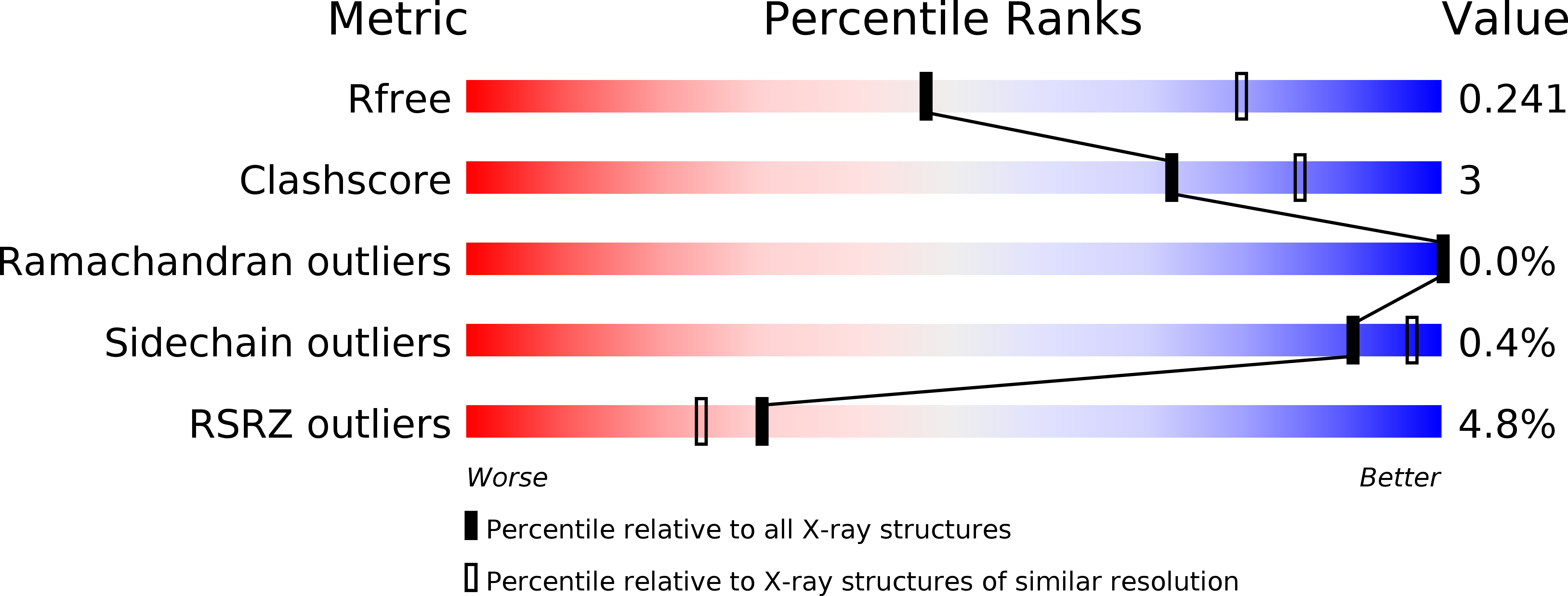
Deposition Date
2015-08-24
Release Date
2015-09-23
Last Version Date
2023-09-27
Entry Detail
PDB ID:
5DCX
Keywords:
Title:
Structural studies of AAV2 Rep68 reveal a partially structured linker and compact domain conformation
Biological Source:
Source Organism:
Adeno-associated virus 2 (Taxon ID: 10804)
Host Organism:
Method Details:
Experimental Method:
Resolution:
2.60 Å
R-Value Free:
0.23
R-Value Work:
0.19
R-Value Observed:
0.19
Space Group:
P 1 21 1


